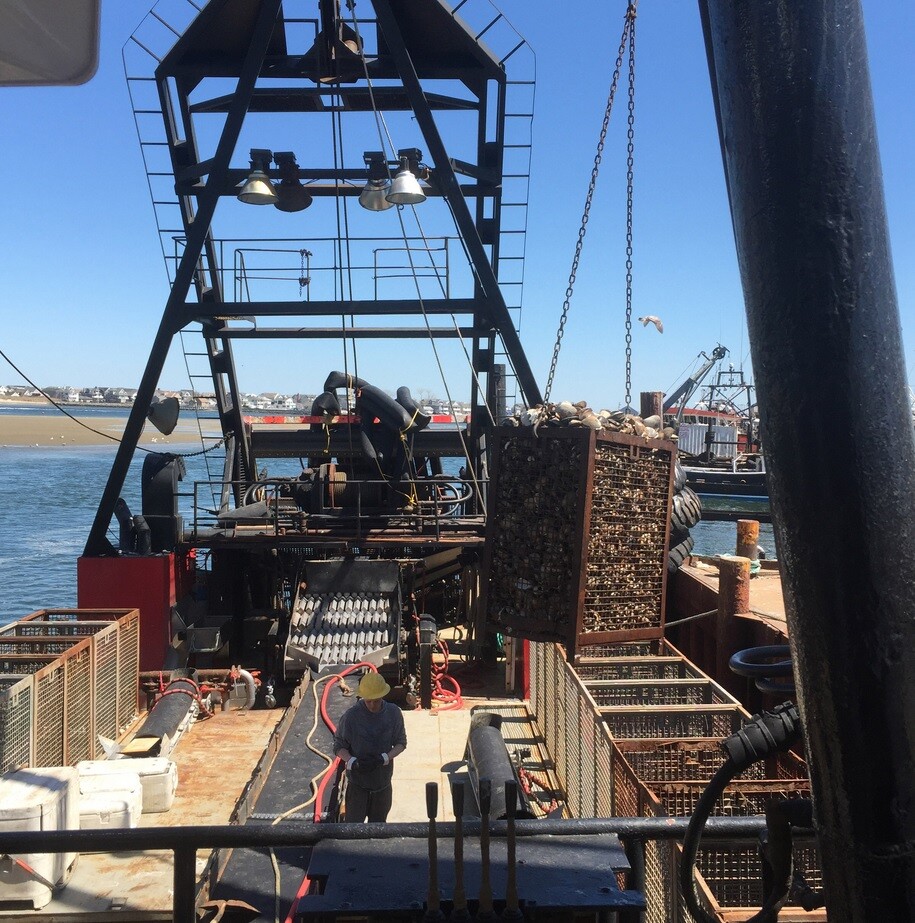As its longtime foodservice customer base slowly returns in the aftermath of covid-19 shutdowns, the Northeast surf clam industry is pushing more into retail sales of ready-to-cook home products.
The marketing moves recall bygone days when Howard Johnson’s chain restaurants popularized the clam strip dinner, and the industry spun off lines of frozen food. But it’s a much tougher supermarket business these days.
“The real problem is about 100,000 restaurants went out of business in 2020, and the rest were closed most of the time,” said David Wallace of Wallace & Associates, a longtime clam industry consultant.
With no sources for the ubiquitous East Coast fried clam dinner, those faithful customers were lost for more than a year. The industry is looking to help consumers bring it home.
“We’ve been focusing on how do we get significant foothold in the retail trade,” said Wallace. “Everyone’s working on new products, and getting our products on supermarket shelves is very demanding.”
Supermarket chains now typically demand “slotting fees” to introduce product lines, at thousands of dollars per store.
“You literally have to buy your way in,” said Wallace.
With demand pushed down, total ex-vessel value of surf clams purchased by the seven major processors in 2020 was around $23 million, down from $28 million reported in 2019, according to the Mid-Atlantic Fishery Management Council.
“Hopefully at this point food service is perking up,” said Wallace. “As long as we don’t have the pandemic resurge, things are coming back to life.”
Smaller frozen packs of clam strips sold very well for years in retail frozen markets, although imitators jumped in and “put 400 pounds of breading on it and ruined the market,” Wallace recalled. So the thinking is high-quality convenience product could recapture that segment.
Out on the ocean, sea clammers are dealing with changes in the climate.
“Trips harvesting surf clam have increased in length as catch rates have declined,” according to the Mid-Atlantic council’s fishery status report from April 2021. “Overall, surf clam landings per unit effort continues to decline as more dense areas are fished down including declines on Georges Bank. The fishery appears to continue to shift its effort northward.” That’s an effect of warming sea temperatures from the Mid-Atlantic up to the Gulf of Maine.
“The real big problem is the clams are not as big as they used to be,” said Wallace. Warming waters in the southern reaches of the clam range are reducing plankton, the microscopic food that clams feed on, so they are not growing as large.
“When you’re making fried clams, you want the longest foot (meaty part of the clam) you can get,” Wallace explained. Until recently 6-inch clams would be common in the 32-bushel cages that clam dredge boats fill at sea, but the size is trending more toward 5 inches.
Smaller clams mean less meat, and more cost per fishing trip.
“When your (meat) yield goes down, your costs go up,” said Wallace. “It takes a little more effort to fill up a cage with 5-inch clams than 6-inch clams.”







